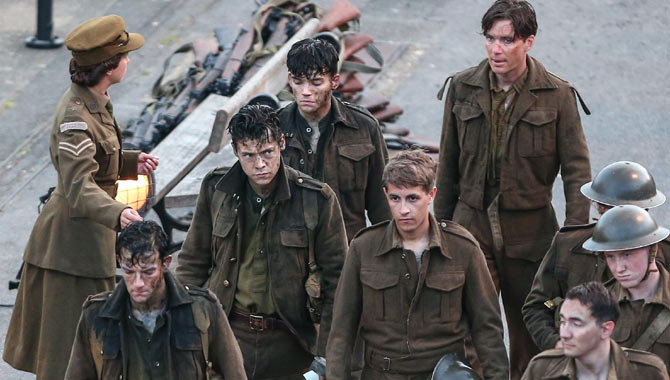
Dunkirk is the latest film from director Christopher Nolan, taking us into WWII Dunkirk, France as German forces have pinned allied forces from the United Kingdom, France, Belgium, the Netherlands, and Canada against the English Channel, dive-bombing the 400,000 stranded soldiers. With German air forces complicating their evacuation, the UK calls upon civilian navigators to risk their own lives and use their own leisurely sea vessels to sail into the war zone and bring the soldiers to safety across the channel into Britain.
Dunkirk is expertly crafted and executed. The highest compliment I can give it is that while watching, I was struck by the fact that it’s just plainly evident that you’re watching the work of someone that flat out knows how to make a film. Director Christopher Nolan is plainly a highly skilled visionary with a gift for producing high-end, top quality product. Put another way, Floyd Mayweather is known as perhaps boxing’s greatest ever technician; watching him fight is to watch the most pure display of how to engage in the sport of boxing. I got that same feeling when watching Nolan’s end product here. That THIS is how you make a film.
The greatest display of this expert craftsmanship is how Dunkirk’s non-linear, multiple storylines are presented and eventually integrated. We follow three different locales and time periods; The Mole, which spans one week of time, The Sea, which spans one day, and The Air, which spans one hour. Each locale/time period with its own characters and threads that eventually intertwine into one fateful rescue operation. Balancing these various narratives could have been unwieldy and worked to confuse the viewer, ruining the experience with the film, but Nolan shows his mastery of non-linear storytelling as he did with Memento, using each individual storyline to propel the film’s overall theme of sacrifice and performance under pressure.
Regarding the film’s theme, its ensemble cast brings to life various instances of their characters both responding positively to the pressure of the moment and negative as well. Mr. Dawson (Mark Rylance), an ordinary British citizen who volunteers to take his leisure boat into the war zone to save soldiers is the film’s strongest example of grace under pressure. He never flinches when danger approaches, nor hesitates when he feels that a soldier that is stranded in the waters of the channel may be able to be saved. His actions and determination to participate in any way he can in a war started by “men his age” that send younger ones off to fight it, display a heroism that is sure to resonate with the audience. In his rescue mission Mr. Dawson picks up a shell-shocked, British soldier that is his mirror opposite when it comes to the notion of self sacrifice, portrayed by Cillian Murphy. Murphy refuses to return to the beaches of Dunkirk to save his fellow soldiers, trying to gain control of Dawson’s boat to turn around to safety and killing a young man named George (Barry Keoghan) in the process. Murphy’s character’s reaction to helping others despite his being helped is later subtly highlighted by the fact that he refuses aid to a fellow water stranded soldier Alex (Harry Styles), unlike what Dawson offered him. Farrier (Tom Hardy), the heroic British pilot who saves the day and repels the remaining German dive bombers from thwarting the rescue efforts while drifting on an empty gas tank, dooming himself to capture, rounds out the displays of how differently people react when their feet are to the fire and they must choose between saving others or saving themselves. Dunkirk is one of film’s most compelling and strong portrayals of the difficulty of heroism.
In addition to the film’s mastery of non-linear storytelling, the camerawork and cinematography in Dunkirk is stunning as well. The visuals feel completely immersive for the viewer, creating an experience where you feel as if you are right there participating in the aerial dogfights, or in danger of drowning within a sinking ship along with other soldiers. Hans Zimmer’s score also meshes perfectly with the scenes on display. Tense moments are made more gripping with the pulsating, flat sounds that almost resemble a nervous heartbeat. Zimmer’s work only adds to the film’s feeling of realism and is one of the most perfectly complimentary scores I’ve heard in some time.
Dunkirk is a masterful piece of storytelling, cementing Christopher Nolan as one of the greatest filmmakers of his era.
Image: Warner Bros.

